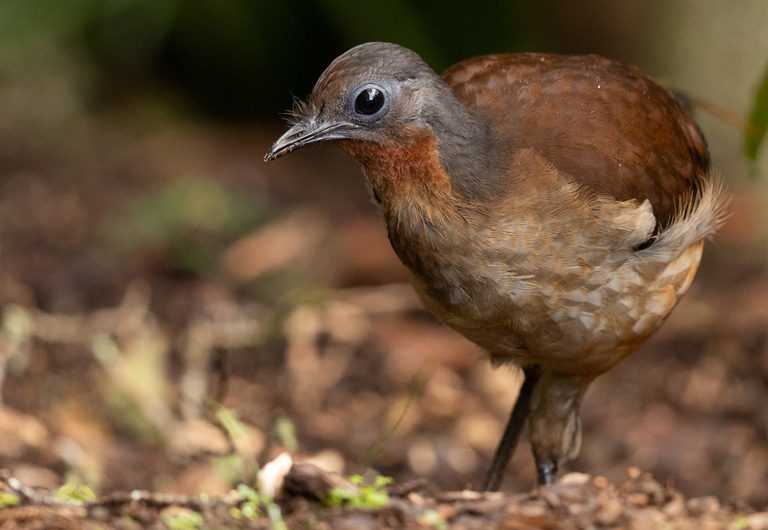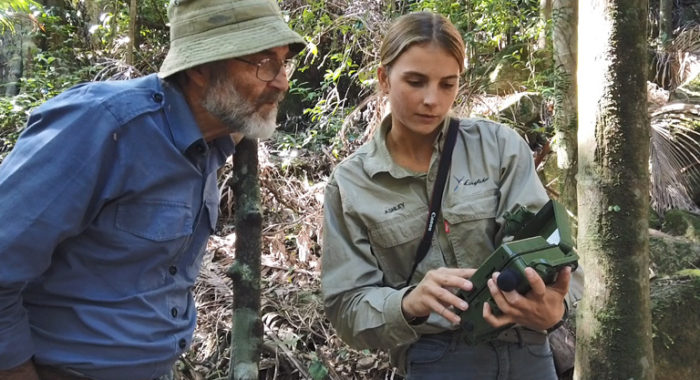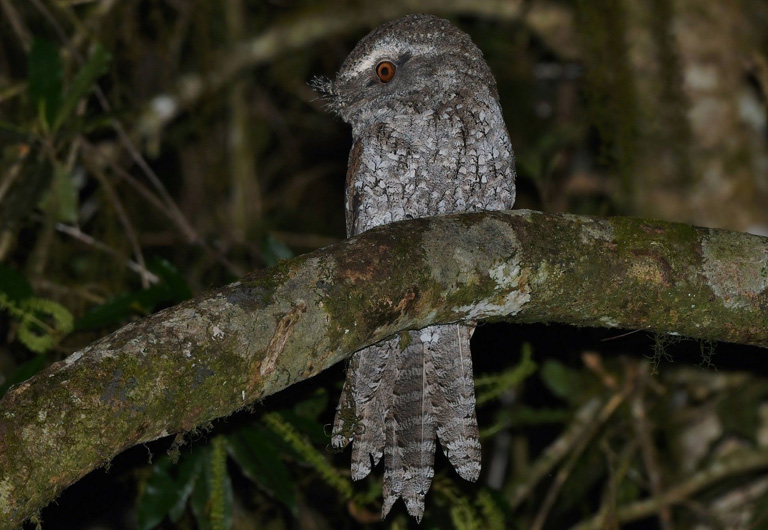
Landholders in the Border Ranges region of New South Wales are being asked to record the elaborate calls of a threatened rainforest songbird this spring to help bring them back from the brink.
The shy Albert’s Lyrebird is one of the focus species of Trails for Tails, a community conservation project which is helping to secure the future of these dramatic birds.
Run by GER regional partnership, the Border Ranges Alliance, the project works with landholders to record valuable information on the lyrebirds and their movements, protect them from threats, and restore and connect vital forest habitat.
“Albert’s Lyrebirds are nesting now, so it is really easy to identify them as the males are all calling. Most of the records we currently have of the birds are from national parks and reserves, but we know that the private land surrounding those areas is just as critical for their survival,” says Jane Baldwin, Trails for Tails Project Manager and GER regional lead of the Border Ranges Alliance.
“The lyrebirds need connected habitat so that they can disperse to new rainforest patches and find partners so that they can have little ones and expand the population.
“It is therefore important for us to establish where lyrebirds are located off park, and where their critical habitat and dispersal pathways are so that we can plan and action projects to restore and protect these.”
Albert’s Lyrebird is a pheasant size, chestnut brown bird with males sporting an elaborate tail of long, ribbon-like plumes. The mainly ground-dwelling birds are masters of mimicry, able to imitate the calls of dozens of other wildlife and man-made sounds such as chainsaws and cars.
With a population estimated to number only 3,500 breeding pairs, the lyrebirds are declining across their limited range due to land clearing and fragmentation, too frequent fires, timber harvesting, and predation by feral animals.
To help capture sightings, motion detection cameras and song meters have been installed on 20 properties around the Border Ranges which landholders are assisting to monitor.
Footage of two Albert’s Lyrebirds bathing captured by one of the motion detection cameras that have been installed on local properties across the Border Ranges to monitor the birds.
The idea for the project stemmed from the concerns raised by a local Blackwall Range vet and property owner several years ago who was worried about the bird’s future after noticing a decline in their numbers.
“The Blackwall Range is a powerful story of what isolation does to a species. The lyrebirds on those mountains are completely isolated. They cannot get away from that location even if they try, and because of this, they are sadly on the path to becoming locally extinct there,” says Jane.
Jane says that Trails for Tails has been very successful, with landholders genuinely engaged in the project.
“One of the landholders phoned me in excitement the other day as he’d just found a female lyrebird on a nest with an egg which is very rare. Another shed tears when we confirmed that she did have lyrebirds on her property. It is lovely to see the deep engagement that locals are having with the project.”
“This connection to the project allows us to then engage those same people in conversations about improving land management and to provide them with advice and funding to support conservation and restoration activities on their properties.”

Trails for Tails is also calling on the community to record sightings of a second flagship species with similar conservation needs, the elusive Marbled Frogmouth. Like Albert’s Lyrebird, little is known about how well frogmouths are surviving on private properties surrounding protected areas.
“We help landholders to see that they are an important part of something bigger and that anything they do contributes to the local, regional and even national conservation picture. Every bit they do makes a difference.”
The project, which was due to end in February 2022, has successfully secured additional funding to conduct feral animal control on selected private properties.
Locals who would like to help to secure the future of Albert’s Lyrebirds and Marbled Frogmouths are invited to record their sightings by joining the Trails for Tails project on iNaturalist.

Trails for Tails is co-funded through the NSW Government’s Saving Our Species program and the Foundation for National Parks and Wildlife.



 Article
Article